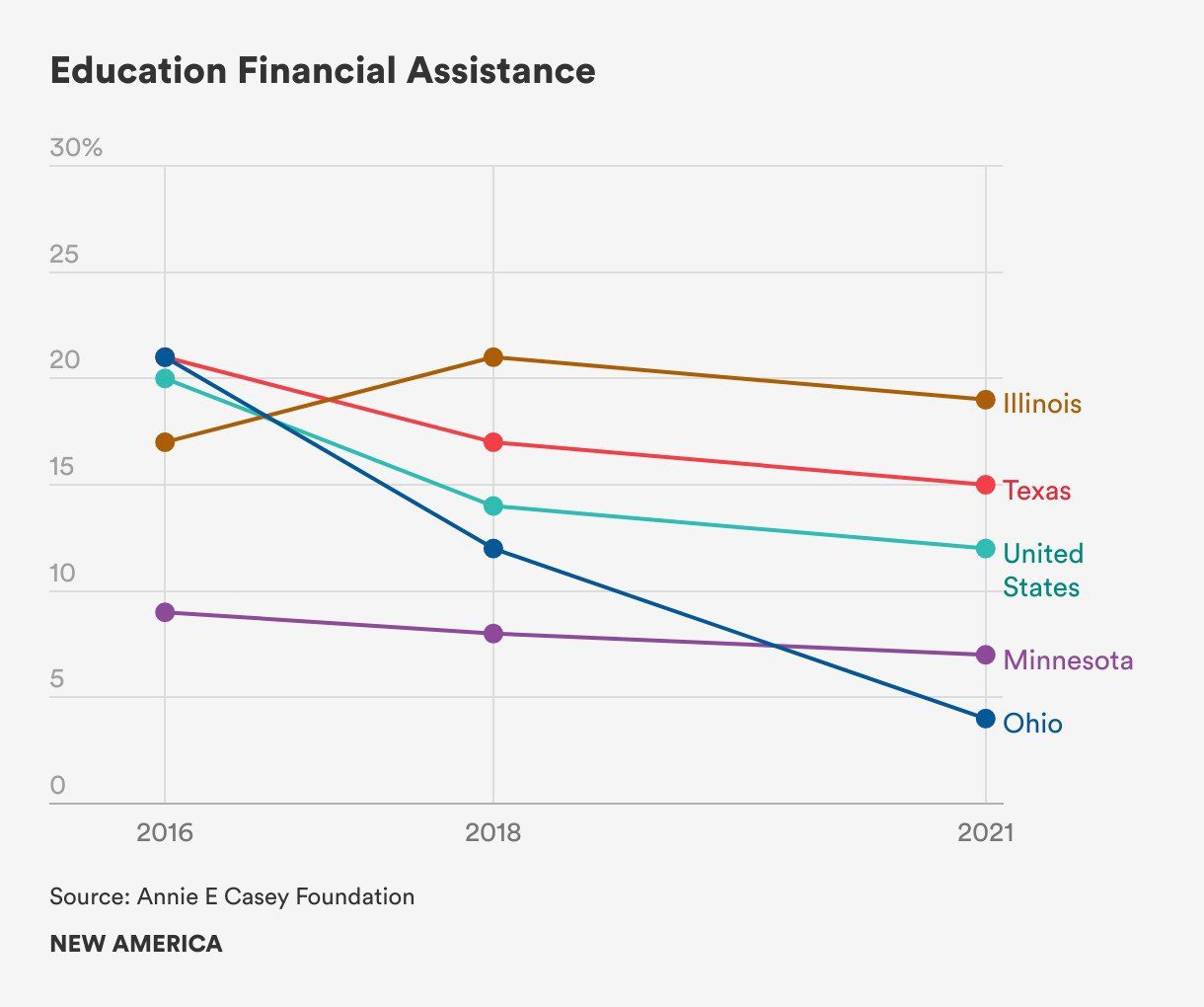Ensuring Aid Access for Foster Care Youth
Young people who spent time in the Minnesota foster care system can now pursue their college dreams without fearing student loan debt. Through the 2021 Fostering Higher Education Act, Minnesota lawmakers pledged $3.8 million annually in tuition assistance for college-bound youths and young adults. While this legislation is a significant step forward for Minnesotans, systemic barriers prevent young people with foster care backgrounds in most states from fully accessing the financial aid they need to pursue their college dreams.
Access to adequate student aid is paramount for these resilient individuals, who often face unique challenges that hinder their educational journeys. Students with foster care backgrounds are more likely to delay college attendance, encounter financial obstacles or temporarily stop or even drop out of college due to financial strain, among other commonly reported risk factors.
In its first year, more than 450 young Minnesotans received the Fostering Independence Higher Education Grant, as reported by MPR News. These state-funded grants function as a “last-dollar†program, bridging the financial gap once all other student aid has been exhausted. The grant amounts vary depending on eligibility for other aid, such as federal Pell Grants.
To qualify for the grant, applicants are required to submit a Free Application for Federal Student Aid. While the FAFSA is commonly used to identify foster care populations and ensure eligible low-income students receive federal Pell Grants, it presents specific and unique challenges for first-generation students, including those with foster care backgrounds who often navigate transitions and pathways to college with fewer social support networks. But even as efforts to simplify the FAFSA continue, state policy makers should also address other overlooked barriers.
Identity can be a complex issue for young people who have endured maltreatment while in the foster care system. Unfortunately, our country’s foster care systems have failed to adequately address their holistic needs, including mental health. As these individuals reach adulthood, many choose to dissociate themselves entirely from the foster care system. This may be a significant contributing factor in the underuse of transitional resources that requires additional research and intervention.
Without adequate guidance and encouragement, some individuals may choose not to self-identify in the FAFSA application process, rendering them disqualified for potentially cost-saving student aid. Evidence already points to wide participation gaps in transition services among older youths aging out of foster care. For instance, an Annie E. Casey Foundation report estimated that fewer than 10 percent of Minnesota youths in the state’s custody used educational assistance offered through Educational and Training Voucher (ETV) grants—a unique source of federal financial aid designated for young people with foster care histories.
As shown in the chart below, underutilization of this program is evident in multiple states, such as Minnesota and Ohio (where just 7 and 4 percent, respectively, of youths with foster backgrounds access these funds by age 21). Even in states like Texas and Illinois, which have significant foster care populations, alarmingly low utilization of ETVs is observed (15 and 19 percent, respectively). These statistics highlight the urgency of policy interventions to address access barriers and increase awareness of available financial resources for college attendance.
How Can State Leaders Eliminate Barriers?
- Create Data-Sharing Agreements Between State Agencies
Governors should begin by mandating state education departments and child welfare agencies implement data-sharing agreements to streamline eligibility verification for aid. Because young people aging out of foster care typically carry the burden of proving their independent financial status, they often must navigate needlessly bureaucratic processes to retrieve the required foster care records from caseworkers who are often overworked and have high turnover rates. But there are viable solutions to this problem. States can simplify the application process by updating their enrollment data systems to automatically flag students with foster care histories who apply for college within the state.
Similar data-sharing agreement measures are already underway in Minnesota. Once students submit a FAFSA, they are automatically flagged for a state grant through a data-sharing agreement between the Minnesota Office of Higher Education and the Department of Human Services. State leaders should also consider hiring an ombudsperson to facilitate financial aid processes.
- Adopt Universal FAFSA Policies for High School Seniors
Increasing FAFSA completion among students with lived foster care experience is crucial in ensuring they access other available financial aid assistance that could potentially go unspent, such as federal Pell Grants. States should make FAFSA submission a universal prerequisite for high school graduation, following the example of the handful of states that have already done this, including Alabama, California, Illinois, Louisiana and Texas.
Texas, for instance, saw a notable jump in FAFSA completion rates among all students, rising from 50 percent to 63 percent in just one year following the adoption of a universal FAFSA policy. Governors in other states should consider similar reforms to ensure that students who could benefit the most from financial aid assistance receive the support they need. Implementing a universal FAFSA completion provision would also remove access barriers for ETV grants, which currently necessitate completing the FAFSA.
State-funded grants like Minnesota’s can become a crucial “last-dollar†resource, covering remaining costs after other forms of aid are exhausted. Streamlining the FAFSA process through data-sharing agreements between state agencies and mandating FAFSA completion for high school seniors can improve accessibility. These policy interventions are vital to ensuring equal access to financial resources and supporting college attendance for students with foster care histories. It’s time to empower and uplift these resilient individuals on their paths to success.
The commentary above was originally published by Inside Higher Education in August 2023
Enjoy what you read? Subscribe to our newsletter to receive updates from Foster Youth Empowered.
